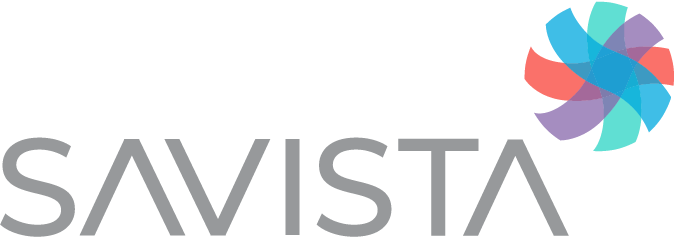Laxmi Patel | Chief Strategy Officer
Epic has changed the face of healthcare; becoming the one source of truth and reporting for many organizations. It provides a wide range of comprehensive functionalities across patient experience, clinical documentation, reporting, and the revenue cycle. It has truly transformed the patient experience with portals for convenient appointment scheduling, viewing of medical records, and the ability for patients to easily communicate with their providers. It’s highly customizable and configurable based upon the needs of the organization and can be tailored to tie in with existing workflows. Its interoperability allows streamlined communication and workflows across internal departments with rich data reporting and actionable insights to drive decision making. Lastly, given the critical importance of quality clinical data in healthcare pared with regulatory compliance such as HIPAA, Meaningful Use and MACRA, Epic helps organizations maintain data security and avoid compliance related fines and penalties.
Regarding the revenue cycle, Epic includes coding tools that help providers and clinical staff accurately code procedures and diagnoses to ensure they are accurately reimbursed for services. It also automates the charge capture workflow, provides tools for managing the claims process, and includes tools for managing patient billing- all which help healthcare organizations optimize their revenue cycle and financial performance.
Epic is a truly invaluable asset when used to its fullest potential. With all the functionality and customization available, features can go misused or unused altogether. Much strategic prework is required before making the move to implement a new instance or upgrade an existing one; extensive training is required for front-end workers to ensure they are using it to its fullest potential, and data analysts need to understand the power of the insights they can access and how to leverage them. The investment of a new or upgrading your EHR can cost hundreds of millions of dollars, so making sure you are getting the most out of that investment is critical.
Given the incredible value that Epic can provide, there are steps those undertaking a new implementation should consider to ensure they are ready for and an efficient and effective go-live. Similarly, organizations that are currently using Epic should evaluate the steps below and take measures to ensure they are getting the most out of their investment. It’s never too late to optimize your existing platform. Please consider the following:
1. Audit your current infrastructure and workflows.
Conduct a gap analysis to fully understand, audit and document your existing workflows to understand where you need process optimization. Map these out to fully understand how and where data currently flows, which departments need access to what data, and how your staff are currently using your systems and processes today.
2. List out system requirements, and where Epic will need to integrate with existing systems and workflows.
This is one of the most important steps in the process. Ensure you create a comprehensive list of all system requirements before any investment is made or any implementation is begun. Think through your existing workflows and how Epic will fit into those, or which workflows may need to be modified. Oftentimes, organizations begin an implementation and get halfway through only to realize there are additional system requirements they need which were not included in the original scope. This can lead to much rework, a delay in go-live, and additional cost.
3. Evaluate which platform and version of Epic will most closely meet your need.
It's recommended you meet with Epic or a consultant to help evaluate current state versus desired future state. Given your system requirements, it’s also important to understand whether you have the right level of budget to invest in the purchase, implementation, and ongoing maintenance of the system. There are add-ons available to the standard platform to customize Epic to meet your unique needs. Do your homework to understand what each add on offers and the associated costs. For example, there are major feature changes and cost differences as you add Ambient Voice Charting and Virtual Health to the standard platform.
4. Understand your data and create a plan for success.
-
Create a plan for patient and practice data migration.
Consider where your data sits today and create a cross-walk from your existing systems to the new EHR. Do you have multiple data sources or another EHR from which you will need to transfer data? This process is complex and critical, and you will need a separate set of system requirements to outline where data feeds exist and which data you will need to migrate to Epic. It’s also critical to think through what historical data will need to be archived elsewhere and accessed as needed.
-
Understand your organizations’ ongoing data analysis needs.
With Epic there will be no shortage of data available. Its best to think through what data will be of most use to your organization and what data you will require to make necessary decisions. You will also need to decide who has access to pull that data and create the appropriate access permissions.
-
Implement data security measures.
As with all EHRs, Epic stores sensitive patient data. You need to make sure your data is secure and that data safety protocols are documented, published, and consistently implemented across your organization.
5. Clearly define your go-live plan.
On average, an EHR can take over a year to implement, with stabilization of the system requiring another 6 to 12 months. Of course, timing is dependent on the size of your organization and whether you are transitioning to Epic from another EHR or a paper system. Its critical to clearly define your go-line plan and communicate that broadly to all teams affected. It should be determined whether you will conduct a large-scale go-live or follow a more phased approach. The route you choose will depend on many factors for your organization. While a phased approach can be effective and provide stability during implementation, this approach can also lead to increased implementation time which also means increased cost. If possible, always test before you do live.
6. Develop best practice workflows to create operational efficiencies.
Document. Document. Document. Make sure you capture workflows as the one source of truth for how your Epic instance should be managed. Publish these and make them widely available to your teams and technology/application support teams who will be interacting with Epic daily.
7. Evaluate staff and training needs.
It is essential you have the right level of staffing to use the platform, the right certified technical / application support to maintain the platform and troubleshoot, as well as thorough end user training. Regular and refresher courses are useful to onboard new employees and to ensure workflows are consistently being followed. Remember, the value of your EHR is in direct correlation to the accuracy of the data that is put into it.
8. Plan for regular, ongoing optimization.
EHR implementation is not a static event. It is a marathon, not a sprint, and should be approached with an ongoing performance improvement program that requires participation from all stakeholders. Optimization will streamline operations, enhance user and patient satisfaction, and improve clinical outcomes. It is a process of continually refining your EHR system to better align with your organization’s ever-changing needs.
Epic is the most powerful tool many organizations have. This value is lost when you bolt on unnecessary additional technologies. Healthcare continues to become more and more complicated with all the interaction and intersection points within it. When fully optimized and operationalized, your EHR can provide a seamless experience to both providers and patients. It becomes your single source of truth for financial and performance reporting, provides consistency and standardization and can improve overall healthcare quality.




